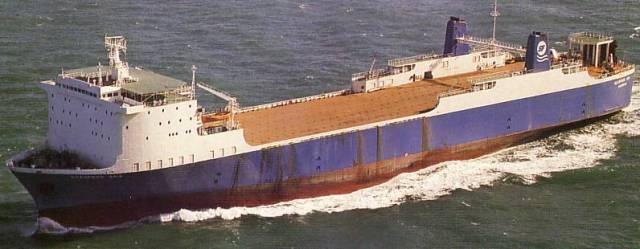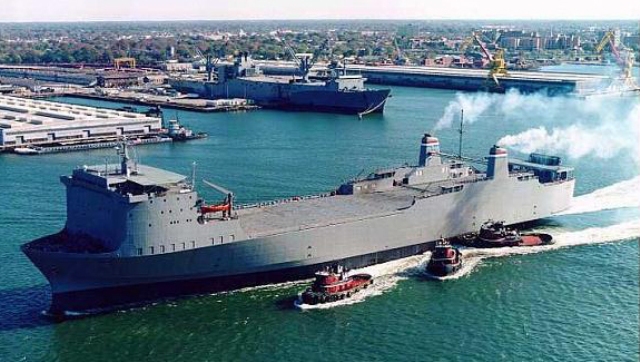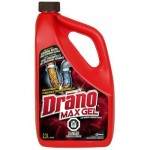The U.S. Cape Ray is heading towards the Mediterranean Sea.
Its mission is to destroy onboard the so-called priority one substances from Syrian chemical weapons at sea in international waters. For the moment the Field Deployable Hydrolysis System (FDHS) has only been tested, at sea… with water. The FDHS was constructed to be operated on land. Robin des Bois has already voiced opposition to this option favoured by the OPCW and the United States (See information note n°1 and n°2).
The Cape Ray scenario has been put in place to “avoid having to put these materials on somebody’s territory where you have to deal with all the political and environmental conditions associated with doing that under local law” as Mr. Frank Kendall the US. Under Secretary of Defence said early January. However, this option of not neutralising chemical weapons in somebody’s back yard will actually take place in everybody’s back yard. The high seas are the common heritage of mankind.
Seaspeed Asia, future Cape Ray, in 1981 © Nils Jonas Sætre / Screen capture Robin des Bois
Cape Ray © Maritime Connector
The current emergency is to remove, under the safest conditions possible, the chemical weapons from Syrian territory and in this light Robin des Bois hopes that an agreement is found at the Geneva Conference.
According to the Convention on chemical weapons, there is no obligation for Member States, in this case Syria, to have their stockpiles neutralised at high speed. For example, the United States will not finish the safe destruction of their stockpile, under the control of OPCW inspectors, before 2023.
The Cape Ray will operate far from international law.
–The Basel Convention on the control of transboundary movement of hazardous waste and their disposal has been put aside.
–The implementation of the European Directive (2009/17/EC), establishing a community vessel traffic monitoring and information system and notably the obligation to designate places of refuge for vessels in distress is unclear. In the case of a major accident, on board the Cape Ray on the storage deck or on the process deck or both, neighbouring countries, if European, have to provide a place of refuge to facilitate salvage and safety measures.
–It is possible that the case of the Cape Ray could fall under the new regulation of the International Maritime Organisation (IMO) prohibiting the blending of bulk liquid cargoes and production processes during sea voyages.
Operations on board the Cape Ray are not in compliance with the OPCW Convention.
–The Convention states that each Member State must give the highest priority to the storage and the destruction to ensure the safety of populations and the protection of the environment. Considering that this is a world first and that the Cape Ray will be subject to rolling and pitching one cannot say that the highest precautions will actually be taken for the personal of over 100 on board and the marine environment.
–Contrarily to the requirements of the Convention, the storage deck and the FDHS’s will not be sufficiently separated to avoid a chain reaction in the case of a fire, explosion or a chemical spill.
–Moreover, the Convention notes that the facility must be clearly designated with a precise address. The position of the Cape Ray will be subject to political, social, economic, safety and weather factors, and for the moment has yet to be decided or at least made public.
In order to neutralise around 700 tonnes of chemical weapons the two FDHS’s aboard the Cape Ray will produce around 7,700 tonnes of effluents. No major concern, Rob Malone the Joint Program Manager for Elimination, reassures us that the by-products will be a caustic solution similar to Drano® used as a drain cleaner.
 Imprimer cet article
Imprimer cet article












